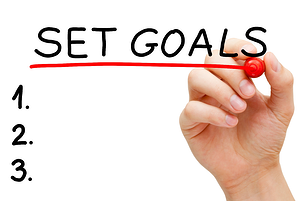 Part 2: Your Program Is Set Up... Now What?
Part 2: Your Program Is Set Up... Now What?
In the first part of this blog, we talked about key strategies to set your program up for success. Remember “begin at the beginning” and “map out the ‘how’”? If you’re still intent on getting data you can actually use from your wellness program, keep reading to learn what do to now that you’re ready to run the initiative.
#3: Stick to the Plan
This seems so obvious, so I won’t spend much time on it. Here’s the thing: you spend a lot of time mapping out the goals and the objectives to achieve those goals, and then you design your program around that outline. For heaven’s sake, stick to the plan. Implement the program as close to the original design as possible. If you get into the offering and you find a fatal flaw in the plan, change what you must, but in order for your evaluation to be true, educational, and actionable, you need to stick to the plan.
#4: Evaluate and Report
Drum roll, please. We’re about to get to the goods, so stick with me here. So, you set up your goals, you map out how you will accomplish the goals, you craft your program accordingly, you bravely stick with the plan, and then when it’s all over, you evaluate how you did.
We think about your post-program evaluation in two ways:
- Overall effectiveness of the program: We calculate how we communicated the program, how many people we reached, how accurately we ran the initiative, how many people completed the program, etc. All of that gets folded together into a program-impact score. The numbers that feed into the impact score and the score itself allow for year-over-year (or program-over-program) comparisons for effectiveness over time.
- Achievement of our goals: If we set up the goals correctly so that they were measureable, and we ran the program knowing the data we needed, we should be able to figure out whether we reached our goals.
In addition to crunching some basic numbers, our staff members are responsible for reporting their program results to their supervisor, who then works with the manager on developing strategies for future program improvements. The supervisor also makes sure that best practice information is shared among other staff so that important lessons learned can be used by everyone. After all, if you hit on some brilliant technique for communicating with the audience you need to reach, shouldn’t the entire community working with that audience benefit from your success?
We’ve been following The Wellness Challenge program as an example throughout these two blogs. So let me wrap up with some of the juicy data Reggie, the manager responsible for this initiative, was able to gather based on pre- and post-program evaluation.
Straight from Reggie’s report, here are his proposed changes for the next The Wellness Challenge offering, as well as his quick summary of his goals:
Goal Report:
- Goal 1: Have at least 80 participants with approximately 1/4 of them being staff. Did not fully meet: Had only 72 participants, but 29% were employees.
- Goal 2: Increase class participation totals by 15% and increase fitness center visits by 250 per month throughout the challenge. Goal met: Increased class size by 65% over prior 2 months and increased FC visits by 435 compared to prior 2 months.
- Goal 3: Increase fitness center membership by 10 members (5 residents and 5 staff) during the challenge. Did not meet: Increased staff membership by 3 and resident membership by 2.
For next year to improve overall program impact:
- Make the teams smaller.
- Give 1 point/minute walked.
- Establish a volunteer limit.
- Hold an orientation/team meet-and-greet before the challenge starts.
- Reconsider food point system to possibly include fruit.
- Reconsider prizes. Try giving away less money.
So Reggie learned he’s got some work to do if he folds those same unmet goals into next year’s offering. He’ll need to revamp his strategies. He’s already well on his way to crafting that plan because he has this complete outline on which to build an improved The Wellness Challenge.
How Are You Evaluating Your Programs?
Certainly there’s more than one way to skin this evaluation cat. How are you doing it? What are you learning? Program evaluation is only one element of a first-rate wellness strategy. Communicating a strong wellness brand, having quality physical spaces for where your initiatives can occur, and cultivating amazing wellness staff are all central to a fabulous program.

